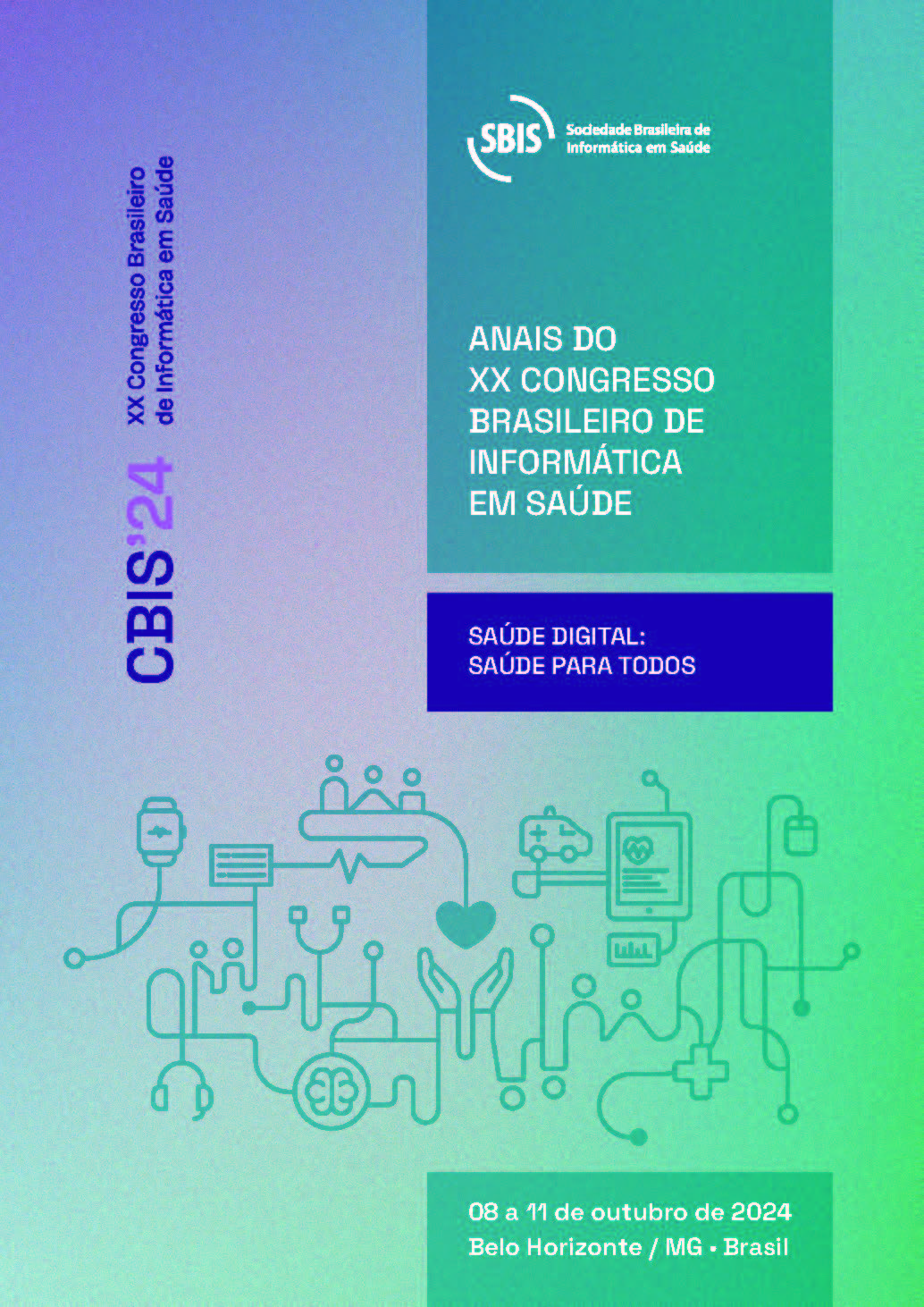Temporal knowledge-based explanations for inductive reasoning: a mHealth case example
DOI:
https://doi.org/10.59681/2175-4411.v16.iEspecial.2024.1272Keywords:
Knowledge Representation, Explicability, mHealthAbstract
Objective: Investigate the generation of explanations for inductive systems using a unified ontology that represents the health status of mobile users. This ontology serves as a priori knowledge, facilitating the generation of explanations. Method: We examined 24 Mobile health (mHealth) apps to develop this ontology, emphasizing extensions that consider temporal aspects. Such aspects are usually neglected in health representations, given the limitation of ontologies in modelling ternary temporal relations. After that, we applied different configurations of an inductive algorithm that receives this ontology as input, generating explanations for their inductive outcomes. Results: Experiments show that the temporal model structure affects the readability of explanations. Moreover, experiments emphasize the tradeoff between accuracy and generalization power. Conclusion: Temporal extensions improve the expressiveness of explanations since temporal relations and concepts are explored to better contextualize temporal-based facts associated with inductive outcomes.
Downloads
References
Fong RC, Vedaldi A. Interpretable Explanations of Black Boxes by Meaningful Perturbation. Proceedings of the IEEE International Conference on Computer Vision, 2017, 3429-3437. DOI: https://doi.org/10.1109/ICCV.2017.371
Garcez ADA, et al. Neural-symbolic learning and reasoning: A survey and interpretation. Neuro-Symbolic Artificial Intelligence: The State of the Art, 2022, 342, 1-51.
Mastropietro A, et al. Multi-domain Model of Healthy Ageing: The Experience of the H2020 NESTORE Project. Italian Forum of Ambient Assisted Living, 2018, 13-21 DOI: https://doi.org/10.1007/978-3-030-05921-7_2
Baader F, Calvanese D, McGuinness D, Nardi D, Patel-Schneider PF. The Description Logic Handbook: Theory, Implementation, and Applications. 2010, Cambridge University Press.
Batsakis S, Petrakis E, Tachmazidis I, Antoniou G. Temporal representation and reasoning in OWL 2. Semantic Web, 2017, 8(6): 981–1000. DOI: https://doi.org/10.3233/SW-160248
Siebra C, Wac K. Engineering uncertain time for its practical integration in ontologies. Knowledge-based Systems. 2022, 251, 109152. DOI: https://doi.org/10.1016/j.knosys.2022.109152
Fallaize R, et al. Popular Nutrition-Related Mobile Apps: An Agreement Assessment Against a UK Reference Method. JMIR mHealth and uHealth. 2019, 7(2): e9838. DOI: https://doi.org/10.2196/mhealth.9838
Lewis M, Sutton A. Understanding Exercise Behaviour: Examining the Interaction of Exercise Motivation and Personality in Predicting Exercise Frequency. J. Sport Beh. 2011, 34(1): 82-97.
Procko T, Elvira T, Ochoa O, Del Rio N. An Exploration of Explainable Machine Learning Using Semantic Web Technology. IEEE 16th Int. Conf. on Semantic Computing, 2022, 143-146. DOI: https://doi.org/10.1109/ICSC52841.2022.00029
Giunti M, Sergioli G, Vivanet G, Pinna S. Representing n-ary relations in the Semantic Web. Logic Journal of the IGPL, 2019. DOI: https://doi.org/10.1093/jigpal/jzz047
Manea V, Hansen MS, Elbeyi SE, Wac K. Towards Personalizing Participation in Health Studies. Fourth Int. Workshop on Multimedia for Personal Health & Health Care, 2019, 32-39. DOI: https://doi.org/10.1145/3347444.3356241
Manea V, Wac K. MQOL: Mobile quality of life lab: From behavior change to QOL. Proceedings of the 2018 ACM International Joint Conference and 2018 International Symposium on Pervasive and Ubiquitous Computing and Wearable Computers, 2018, 642-647. DOI: https://doi.org/10.1145/3267305.3267549
Detrano R. et al. International application of a new probability algorithm for the diagnosis of coronary artery disease. American Journal of Cardiology. 1989. 64, 304-310. DOI: https://doi.org/10.1016/0002-9149(89)90524-9
Figueiredo EB et al.. Semântica em prontuários eletrônicos para oncologia pediátrica: uma revisão integrativa. Journal of Health Informatics. 2023, 15(2):61-9. DOI: https://doi.org/10.59681/2175-4411.v15.i2.2023.993
van der Veer SN, et al. Trading off accuracy and explainability in AI decision-making: findings from 2 citizens’ juries. J. American Medical Informatics Association. 2021, 28(10), 2128-2138. DOI: https://doi.org/10.1093/jamia/ocab127
Downloads
Published
How to Cite
Issue
Section
License

This work is licensed under a Creative Commons Attribution-NonCommercial-ShareAlike 4.0 International License.
Submission of a paper to Journal of Health Informatics is understood to imply that it is not being considered for publication elsewhere and that the author(s) permission to publish his/her (their) article(s) in this Journal implies the exclusive authorization of the publishers to deal with all issues concerning the copyright therein. Upon the submission of an article, authors will be asked to sign a Copyright Notice. Acceptance of the agreement will ensure the widest possible dissemination of information. An e-mail will be sent to the corresponding author confirming receipt of the manuscript and acceptance of the agreement.





